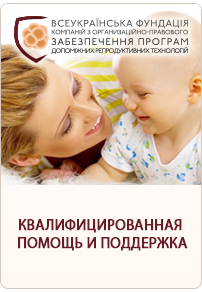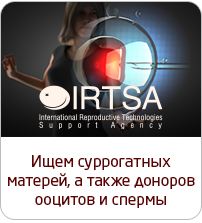Father for 34 children
In his youth, Chris Whitman often sold his sperm to a fertility clinic because he needed the money. Two years ago, he decided to check the records and was astounded to discover how many babies he had fathered.
'Twenty girls and 14 boys - more than three football teams' worth running around with my genes.'
In 1991, I was living in London and doing two years of unpaid training. In need of a little extra income, I read that sperm donors were always in demand. I guess I had some abstract notion that it would be good to help people with fertility problems but didn't really give it much thought. It's not what people want to hear, but mostly I was concerned with helping myself.
Donors needed to be young, healthy and, of course, have good product. Once my sperm had jumped through the necessary hoops, so to speak, I became a regular visitor to a clinic in south London. I'd head over on my scooter once or twice a week. No sexual activity was permitted in the three days before a donation – if your sperm count was regularly down, you would not be paid.

There was no contact with the other donors (beyond passing them in a corridor occasionally, eyes down) but the women working there were friendly and interesting to chat to. Now and again I'd see what looked like milk churns being opened to store the goods. The dried-ice effect of the liquid nitrogen they contained seemed like the stuff of science fiction, but although it was a curious experience it seemed quite disconnected from the rest of my life. It wasn't something you talked about much. At all.
Soon enough I was working again and donating no longer fitted easily into my schedule. At that time all donors were anonymous by law and within a few years I had more or less forgotten about the whole thing.
In the following decades I continued to live in London before moving abroad with a girlfriend. Only once in that time did I mention to her this part of my past. Her understandable reaction was that it was something she didn't want to hear about and it was duly never mentioned again.
Later, our own children came along and in time we moved back to Britain. From someone who had been a little ambivalent about babies, I became one of those irritating, nappy-happy dads who couldn't get enough of it. I rarely thought of my other children. In fact, I didn't know if there were any others or that there existed any mechanism for finding out. I wrongly assumed that total anonymity cut both ways.
And yet there was something in watching my own children grow that occasionally gave me cause to wonder. I guess most parents look for some genetic inheritance or the (perceived) personality traits that we may or may not hand down. Looking back I can see that becoming a father made me more conscious of the consequences of my earlier actions.
Having my own children had also caused me to reflect on my relationship with my late father and the similarities between us. I considered what it would be like to grow up with virtually no knowledge of one biological parent.
It was the sudden and unexpected end of my marriage in 2011 that changed everything. During this troubled time, my past as a sperm donor was a long way from my thoughts, yet in broader terms the separation was the catalyst for starting the process of discovery.
One day in late 2012, I heard a radio report about a donor register and it triggered something. The emotional dust from the split had settled a bit and it dawned on me that I now had a choice about whether to revisit the past.
Once I had made the decision, the first stop was the Human Fertilisation and Embryology Authority (HFEA), the body that licenses and monitors fertility clinics in the UK and a good source of information on donor-related issues.
A phone call confirmed that they had a record of me as a donor and I requested the information they held on me. After sending off various identity documents, a signed-for letter arrived. Its short, formal nature belied its explosive content. Between 1992 and 2003, no fewer than 34 children had been born as a result of my donations. This was more than double the number I had imagined. In 1993 alone there were 16 births.
I'd like to say that as I sat there, staring at this barely credible letter, my mind swelled with existential musings. Sadly it dredged up an old Viz cartoon of a well-oiled Sid the Sexist singing, If the Lady wants a Baby, I'm the Cock o' the North.
Twenty girls and 14 boys: more than three football teams' worth running around with my genes. There is no template for how one is supposed to react when faced with something so extraordinary. Although I had a strong urge to share the news, I didn't feel ready to talk to anyone in myfamily and only spoke to a handful of friends.
I am a single parent now and just what I will one day tell my children, who are at primary school, is not yet clear. Few parents relish a conversation that will elicit the question "What is sperm?" – and then go downhill from there. The smart thinking seems to be to focus on the fact that I "helped other people have families". Probably they will listen, ask a few questions, accept it with a shrug and go about their day.
It should be noted that 34 donor-conceived children is an unusually high number. One of the reasons for this is that after a year or so of donating at the clinic I was told my services were no longer required. They now had enough stock. The HFEA sets a limit of 10 families who may be conceived from any one donor. My younger self must have seen this rule as pettifogging bureaucracy gone mad. Oh, that and an impediment to the steady trickle of cash payments to which I had grown accustomed. I simply registered at one of the clinics in Harley Street (where, it would appear, no cross checking was done) and carried on donating.
In fact, under 1% of sperm donors create the 10-family maximum – the average is just one or two families, with one or two children in each. Typically, clinics use the sperm from one donor to treat only six women and nearly 20% of registered donors are never used at all. The HFEA is keen for clinics to make better use of existing donors, though probably not to the extent that the result is dozens of children from the same donor.
In early 2013, I began to consider the next big step: should I waive my right to anonymity? Among the few close friends I canvassed, opinions were divided, though I think by now I had already made up my mind. A short while later, I read an article in this newspaper by a young donor-conceived woman who wrote movingly about her desire to find her donor father. For the first time I was able to properly comprehend the experience from the other side.
Family history, mostly, is unexceptional stuff. Yet its simple knowledge, taken for granted from an early age, helps to establish a sense of self – your place in the scheme of things. For some donor-conceived people, a complete blank on the side of their biological father can, to a greater or lesser degree, leave something of a hole.
In my case, I no longer had a compelling reason to remain anonymous and I came to feel that to deny someone the opportunity to try to find what he or she is seeking would be an act of selfishness on my part.
In the end it was probably a mixture of egoism, altruism and curiosity that finally led me to re-register with the HFEA as an identifiable donor. Offspring over the age of 18 could now request information about me, including the contact details I provided. I chose to give just an email address and the name of the town where I now live.
Then, having taken the decision to avail myself to the multitude, nothing happened. This was to be expected, yet a vague sense of anti-climax persisted for weeks.
There are, of course, many reasons why contact may not be made with an identifiable donor. In my situation, barely half of the children have reached an age where they may request information about me. Others may be unaware they are donor-conceived.
It is, in any case, an emotional journey for a donor-conceived person and their parent(s) to embark on. Your parents are the people who do the hard but rewarding work of raising you. It may not be in anyone's interest to dig around in the past.
I had assumed, on no evidence at all, that any donor-conceived young person in search of their donor would be seeking to meet. In fact, a quick browse of some relevant forums suggests that many just want a photo and a little more information. There is no question of donors being liable for any financial support for their offspring.
To date, only 126 sperm donors have chosen to re-register and remove their anonymity. Of the thousands who donated before 2005, when the law changed, this is a disappointingly tiny fraction.
Not long after the release recently of Delivery Man, a comedy about a sperm donor who has fathered more than 500 children, I received a call from the HFEA. They told me that a young person has requested information about me. It seems that this donor's tale is not finished.
www.theguardian.com
- The central office of IRTSA Ukraine completely restores work
- How we work during the COVID-19 pandemic
- 1st International Congress on Reproductive Law
- Soon Americans may face a new ethical dilemma
- ‘Friends’ star Jennifer Aniston is pregnant with twins
- Image processing technology can impact the success rates of ivf
- Editing genes of human embryos can became the next big thing in genetics
- Supermodel Tyra Banks undergoes IVF
- Scientists discovered a new, safer way for egg freezing
- French scientists have managed to grow human sperm cells in vitro









